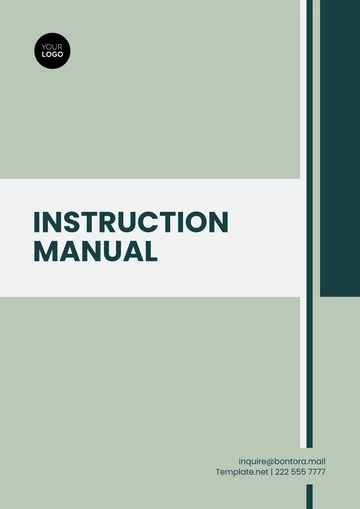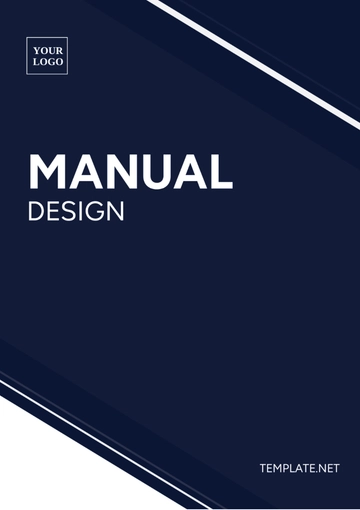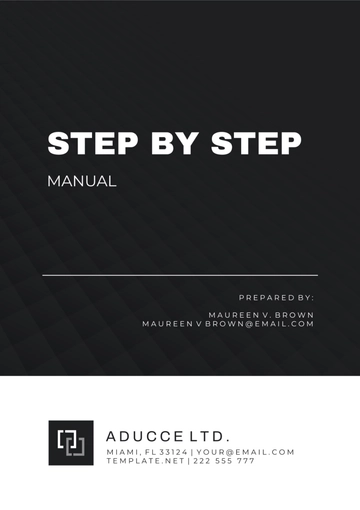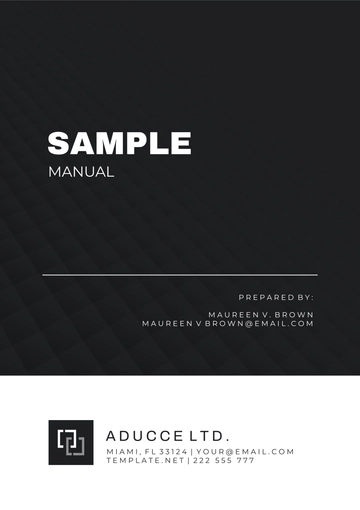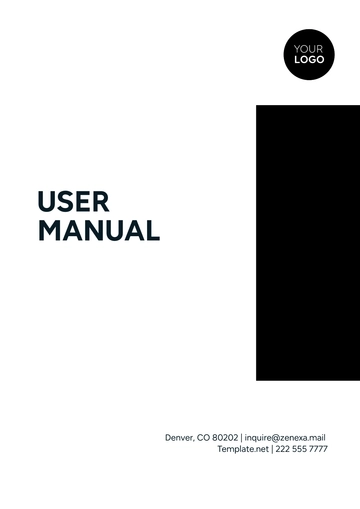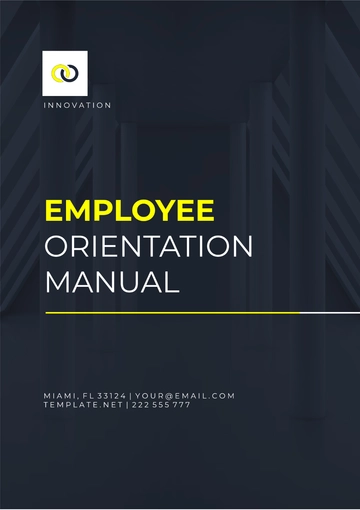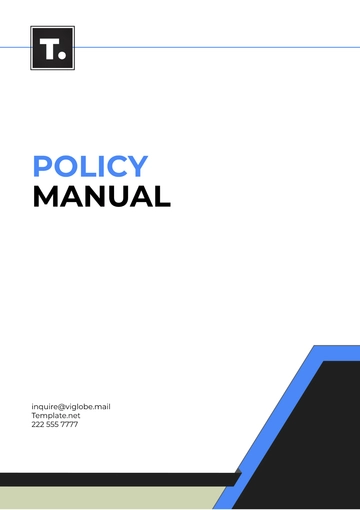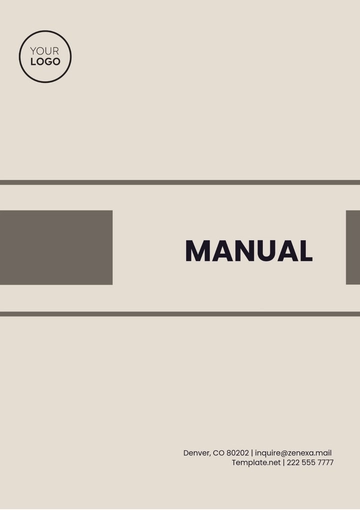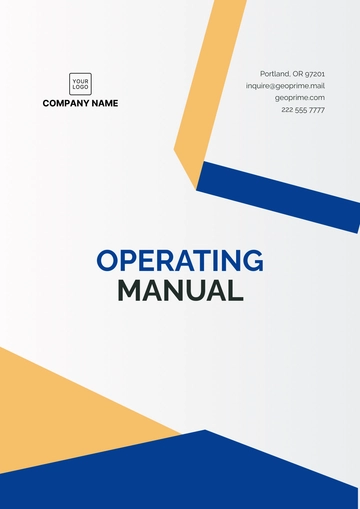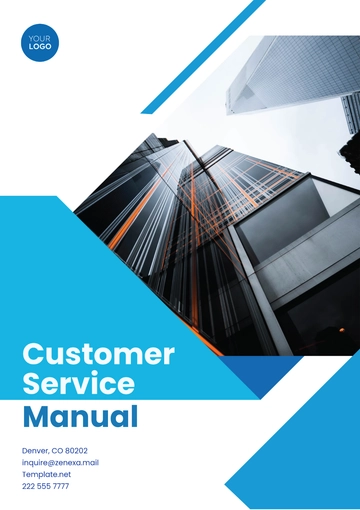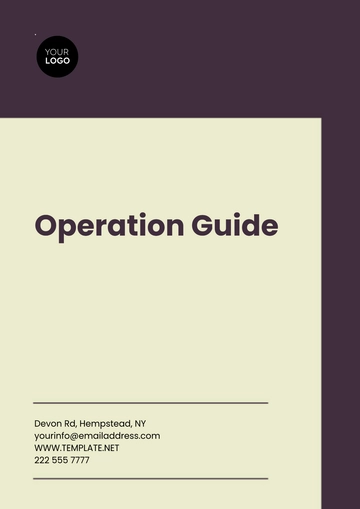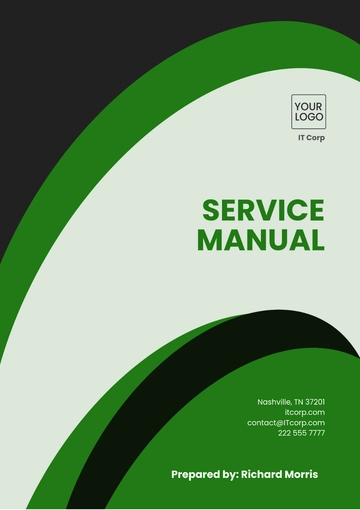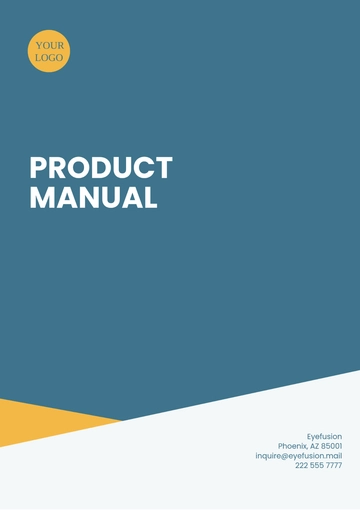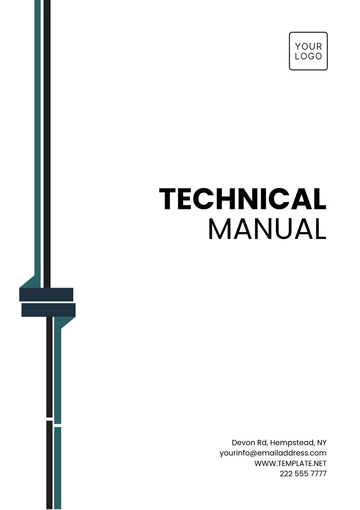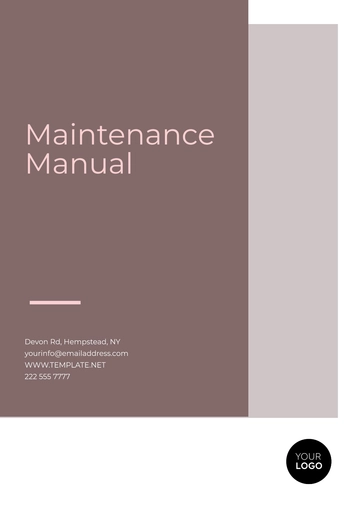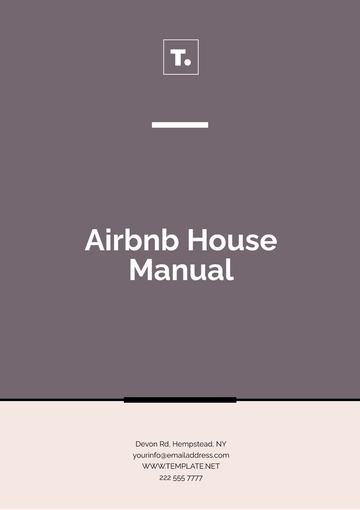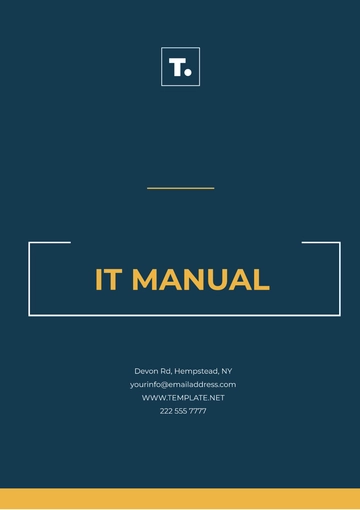Free Marketing SEO Content Manual

1. Introduction
1.1 Purpose of the Manual
Welcome to the [Your Company Name] Marketing SEO Content Manual. This document serves as a comprehensive guide to creating SEO-optimized content for our marketing efforts. Its primary purpose is to empower our marketing team with the knowledge and tools necessary to improve the visibility and performance of our content in search engine results.
1.2 Contact Information
Company: | [Your Company Name] |
Email: | [Your Company Email Address] |
Address: | [Your Company Address] |
Phone: | [Your Company Number] |
Website: | [Your Company Website] |
Social Media: | [Your Company Social Media] |
2. SEO Keyword Research
2.1 Conducting Keyword Research
Keyword research is the cornerstone of effective SEO. It involves identifying the terms and phrases that our target audience is using to search for information related to our products or services. By conducting comprehensive keyword research, we can better understand our audience's search behavior and tailor our content to meet their needs.
Primary Keywords | Secondary Keywords |
|
|
Start by identifying primary keywords that directly relate to our business and offerings. These are typically broader terms with higher search volumes. Secondary keywords are more specific and can be used to target niche audiences or address specific aspects of our products or services.
2.2 Competitor Analysis
Understanding what keywords our competitors are targeting can provide valuable insights into the competitive landscape. Analyze competitor websites, including their content and meta tags, to identify keywords they are ranking for. Tools like SEMrush or AHREFS can assist in this analysis.
By identifying the keywords our competitors are successful with, we can assess the viability of targeting similar keywords in our content strategy. However, it's important to differentiate our content and provide unique value to our audience.
3. Content Structure
3.1 Heading Hierarchy
Properly structuring content with clear headings (H1, H2, H3, etc.) is essential for both user experience and SEO. A well-organized hierarchy not only improves readability but also helps search engines understand the content's organization and hierarchy of information.
When structuring content:
Use H1 tags for the main title or headline of the page, e.g., "The Ultimate Guide to SEO Content Optimization."
Utilize H2 tags for section headings to divide content into meaningful segments, e.g., "On-Page SEO Best Practices."
Use H3, H4, and so on, for subheadings within sections, e.g., "Keyword Placement Strategies."
This hierarchical structure not only guides readers through the content but also signals the importance and relationships of different parts of the content to search engines.
3.2 Use of Bullet Points and Lists
Using bullet points and lists can enhance the scan and user-friendliness of our content. Lists break down information into easily digestible chunks, making it more engaging and improving the overall user experience.
Consider using bullet points or numbered lists when:
Presenting a series of items or steps, e.g., "Key SEO Factors to Consider:"
Keyword research
Content optimization
Link building
Highlighting key features or benefits, e.g., "Benefits of Our SEO Services:"
Improved search visibility
Increased organic traffic
Higher conversion rates
Comparing different options or products, e.g., "Comparison of SEO Tools:"
SEMrush
AHREFS
MOZ
3.3 Formatting Guidelines
Consistency in formatting is crucial to maintain our brand's professional image. Follow our brand's formatting guidelines to ensure a consistent look and feel across all marketing materials. This includes typography, colors, font sizes, and spacing.
By adhering to these guidelines, we reinforce our brand identity and create a cohesive visual experience for our audience.
3.4 Content Length
For optimal SEO performance, aim for a word count of approximately 1,500 words for blog posts and 2,000 words for articles. Content length can vary depending on the type of content and the topic's complexity. However, as a general
guideline:
Blog posts: 1,200 - 1,800 words
Articles: 1,800 - 2,500 words
Longer content often provides the opportunity to cover topics in-depth and rank for a wider range of related keywords, but it's essential to prioritize quality and value over length.
4. Keyword Placement
4.1 Title Optimization
Including primary keywords in the title of your content is a critical SEO practice. The title serves as the first point of contact between your content and search engine users. It should be not only keyword-rich but also engaging and accurately reflective of the content.
Sample Title: "Mastering SEO Content: A Comprehensive Guide to Boost Your Rankings"
4.2 Heading Optimization
Incorporating keywords into headings and subheadings is essential for providing a clear structure to your content and signaling the content's topics to search engines.
Example Heading: "On-Page SEO Best Practices: Digital Marketing Services Strategies"
4.3 Body Text Optimization
Naturally integrating keywords into the body of your content is key to SEO success. Avoid keyword stuffing, as it can negatively impact your rankings and readability. Instead, focus on writing valuable, informative content that naturally includes your target keywords.
Sample Content Sentence: "When optimizing your website, it's important to consider various digital marketing service techniques to improve your search rankings."
4.4 Keyword Density
Maintaining a reasonable keyword density throughout your content is essential. A recommended keyword density falls in the range of 1-2%. This means that, on average, your target keyword should appear once or twice for every 100 words of content.
Example Calculation: If your content is 1,000 words long, your target keyword should appear approximately 10 to 20 times.
5. Content Optimization
5.1 Internal Linking
Enhance user navigation and distribute link authority by including internal links to other relevant pages on our website. Internal linking not only keeps visitors engaged but also helps search engines understand the structure of your website.
Sample Text: "Explore our in-depth guide on digital marketing services, which complements the information provided in this article."
5.2 External Linking
Link to authoritative sources when necessary to enhance credibility and provide additional value to your readers. External links can strengthen your content's reliability and authority.
Sample Link: "According to a recent study by..."
5.3 Image Optimization
Optimize images by providing descriptive alt text and using keyword-rich file names for image files. This practice not only improves accessibility but also allows search engines to understand the content of your images.
Sample Alt Text: "SEO-experts-discussing-keyword-optimization.jpg"
5.4 Voice Search Considerations
As voice search continues to gain popularity, consider optimizing your content to cater to voice search queries. This may involve using natural language and answering questions directly within your content.
Sample Voice Search-Friendly Content: "What are the best SEO practices for digital marketing services? Let's find out."
6. Meta Tags
6.1 Meta Title Optimization
Craft compelling meta titles that include primary keywords and accurately represent the content. Keep titles within the recommended character limit (typically 50-60 characters) for search engine display.
Sample Meta Title: "Unlocking SEO Success: Digital Marketing Service Strategies for 2050"
6.2 Meta Description Optimization
Write informative meta descriptions that encourage click-throughs from search engine results pages (SERPs). Provide a brief, enticing summary of your content and include a call to action when relevant.
Sample Meta Description: "Learn how to improve your search rankings with our digital marketing services guide. Start optimizing your website today!"
6.3 URL Structure
Ensure that URLs are descriptive and include keywords where appropriate. Avoid using lengthy or cryptic URLs. A clear and keyword-rich URL structure can improve search engine visibility.
Sample URL: "https://www.website.com/seo-content-optimization-guide"
Mobile Optimization
7.1 Mobile-Friendly Design
Ensure that your content is responsive and displays well on mobile devices. A mobile-friendly design is crucial for providing a seamless user experience to mobile users.
Sample Text: "Our website is designed to adapt to all screen sizes, providing an optimal experience for mobile users."
7.2 Page Load Speed
Optimize images and content to reduce page load times on mobile devices. Faster loading times not only improve user experience but also positively impact SEO rankings.
Sample Text: "We've optimized our site's images and content to ensure quick loading, even on mobile devices with slower connections."
7.3 Mobile SEO Best Practices
Follow mobile SEO best practices, such as optimizing for local search if applicable to our business. Mobile search optimization helps capture local and on-the-go audiences.
Sample Text: "For local businesses, mobile optimization includes ensuring accurate location information and leveraging local SEO techniques to reach nearby customers."
8. SEO Tools
Recommended SEO Tools | Description | Access |
SEO Pro Analyzer | SEO Pro Analyzer is a comprehensive SEO tool designed to simplify the optimization process. It offers the following features:
| toolaccesslink.com |
These tools can greatly assist in keyword research, competitive analysis, on-page optimization, and performance tracking. You can access SEO Pro Analyzer by visiting toolaccesslink.com
9. Content Promotion
9.1 Social Media Promotion
To maximize the reach of our content, it's essential to promote it on our social media platforms, including [Your Company Social Media]. Here are some strategies for effective promotion:
Use engaging captions that provide a teaser of the content's value.
Incorporate relevant hashtags to increase discoverability.
Encourage followers to share and engage with the content.
Consider scheduling posts at optimal times for your target audience.
9.2 Email Marketing
Leverage our email marketing campaigns to distribute content to our subscribers. Email is a powerful channel for content promotion. Here's how to do it effectively:
Include links to the content in email newsletters.
Write compelling subject lines that pique subscribers' interest.
Personalize content recommendations based on subscribers' interests and behaviors.
Track email open rates and click-through rates to gauge content effectiveness.
9.3 Other Promotion Channels
In addition to social media and email marketing, consider exploring other promotion channels to increase content visibility. Some options include:
Guest Posting: Contribute guest articles to reputable websites in your industry, including backlinks to your content.
Influencer Partnerships: Collaborate with influencers in your niche to promote your content to their followers.
Paid Advertising: Invest in targeted advertising campaigns on platforms like Google Ads or social media.
10. Analytics and Reporting
10.1 Google Analytics Setup
To monitor the performance of our content, ensure that Google Analytics is properly set up. Follow these steps to set it up:
Access Google Analytics: Go to the Google Analytics URL and log in using your login credentials.
Create a Property: Set up a new property for your website.
Install Tracking Code: Follow the provided instructions to install the tracking code on your website.
Configure Goals: Define specific goals, such as form submissions or product purchases, to track conversions.
10.2 Tracking Key Metrics
Monitoring key metrics is essential for assessing the effectiveness of your SEO and content efforts. Here are key metrics to track:
Organic Traffic: Measure the volume of organic search traffic to your website.
Click-Through Rates (CTR): Analyze CTR for organic search results and email campaigns.
Conversion Rates: Track the percentage of visitors who complete desired actions, such as making a purchase or filling out a contact form.
Use Google Analytics and other analytics tools to gather this data. Instructions for accessing and interpreting data can be found in the analytics tool's documentation or help center.
10.3 Reporting Frequency
To keep stakeholders informed about SEO performance, generate and share SEO performance reports on a monthly basis. Regular reporting allows us to track progress, identify trends, and make data-driven decisions.
11. SEO Updates
11.1 Keeping Content Up to Date
Regularly review and update the content to ensure it remains relevant and accurate. This includes:
Updating statistics and data.
Refreshing outdated information.
Adding new insights or developments.
Improving readability and user experience.
11.2 Algorithm Changes
Stay informed about search engine algorithm updates through reputable SEO news sources and industry blogs. When major algorithm changes occur, assess their impact on our SEO strategies and make necessary adjustments.
11.3 Best Practices Updates
Continuously evolve our SEO practices in line with industry best practices. Keep up-to-date with the latest SEO trends, techniques, and guidelines. Regularly review and optimize existing content to align with updated best practices.
12. Compliance and Ethics
12.1 Copyright and Plagiarism Guidelines
Respect copyright laws and avoid plagiarism by citing sources properly and using original content. Ensure that all content created adheres to copyright regulations and provides proper attribution when necessary.
12.2 Data Protection Compliance
Adhere to data protection regulations, such as GDPR or CCPA, when collecting and using user data. Safeguard user privacy and obtain necessary consents as required by applicable laws.
12.3 Ethical SEO Practices
Engage in ethical SEO practices at all times. Avoid black-hat techniques, such as keyword stuffing or link spamming, that could harm our online reputation or lead to search engine penalties.
13. Brand Guidelines
13.1 Incorporating Brand Messaging
Ensure that all content aligns with our brand's messaging and values. Our brand message should be consistent and reflect our core principles.
13.2 Maintaining Brand Consistency
Follow our brand guidelines for typography, colors, and logo usage in all marketing materials. Consistency in design reinforces our brand identity.
13.3 Tone and Voice
Maintain a consistent tone and voice across all marketing materials in line with our brand's identity. Whether it's a formal, authoritative tone or a more casual, friendly one, our content should reflect our brand's unique voice.
- 100% Customizable, free editor
- Access 1 Million+ Templates, photo’s & graphics
- Download or share as a template
- Click and replace photos, graphics, text, backgrounds
- Resize, crop, AI write & more
- Access advanced editor
Elevate your digital marketing with our Marketing SEO Content Manual Template. Streamline your SEO strategy with expert guidance on keyword research, content optimization, analytics, and more. Craft SEO-friendly content that boosts visibility and drives organic traffic. Empower your team with this comprehensive manual, tailored for marketing professionals. Achieve SEO success effortlessly.
